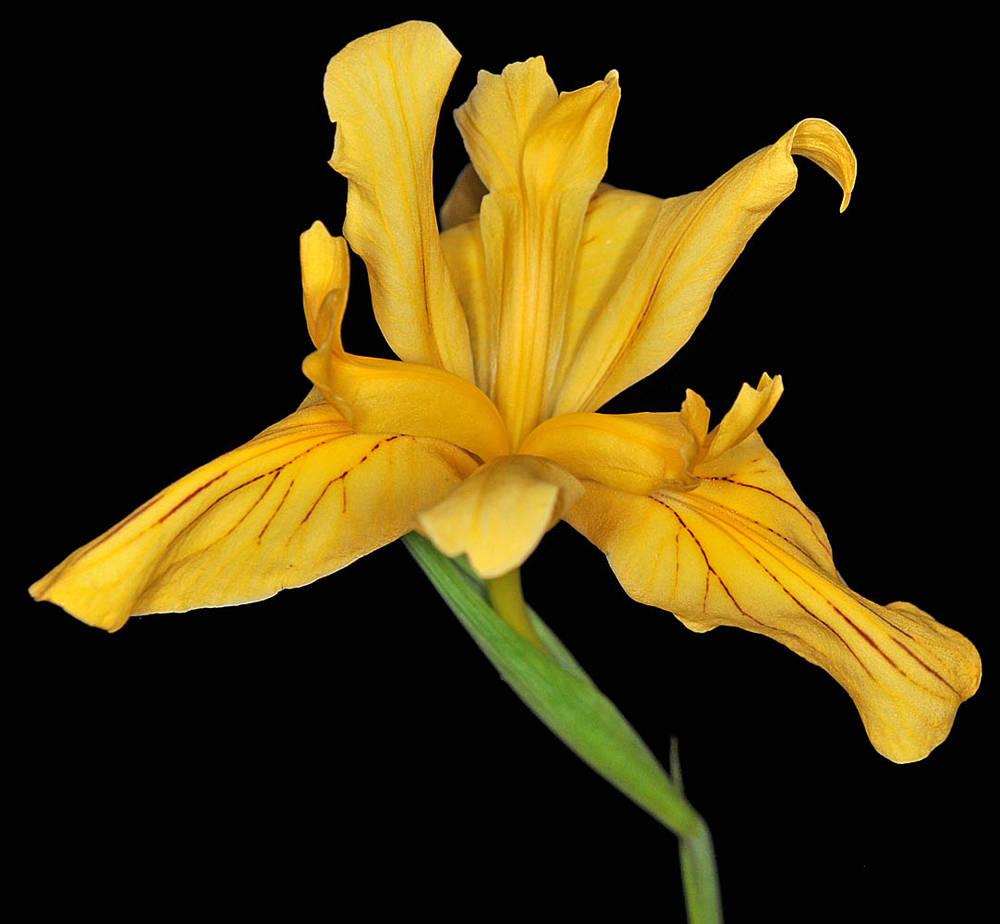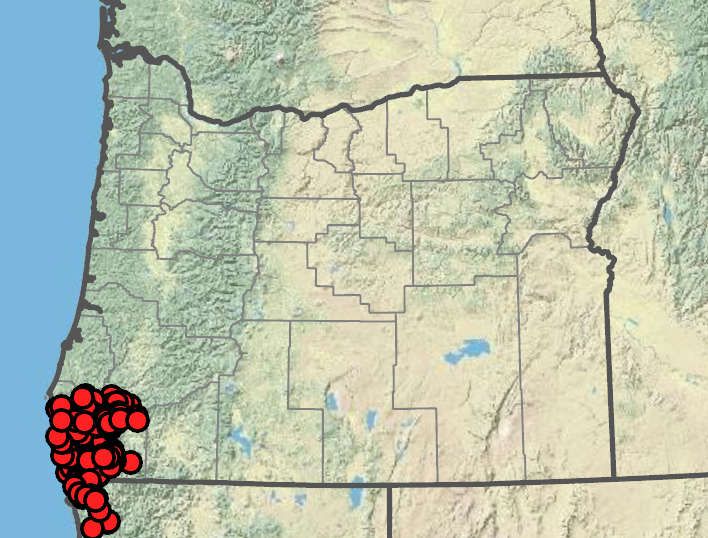Iris innominata
Iris germanica
Del Norte County iris, golden iris
bearded iris, garden iris, German iris
fibrous;
rhizomes slender, freely branching, covered with leaf bases that form dense clumps.
fleshy;
rhizomes homogeneous; many-branched.
unbranched.
branched.
evergreen;
basal leaves narrow, 2–4 mm wide; grass-like; longer than flowering stem, dark green and glossy, pink or purple basally;
cauline leaves 2–4, spreading.
unifacial; sword-shaped, 3.5 cm wide, forming an obvious fan.
1(2)-flowered;
bracts opposite, closed; broad.
1–3-flowered;
bracts green, sometimes with a purple base.
usually dark golden yellow, sometimes cream, pink, lavender, or purple, usually heavily veined purple or brown;
floral tube slender, 15–30 mm;
style tips rounded, reflexed, overlapping;
stigmas triangular.
perianth blue-violet, yellow, brown, or white with various patterns of color;
sepals with beard along midrib of claw and lower part of limb;
petals erect.
round in cross section.
roundly 3-lobed.
dark brown, sharply angled, wrinkled and pitted.
red-brown, wrinkled.
=40.
Iris innominata
Iris germanica
Dry, open woods. Flowering Mar–Jul. 0–1500 m. CR, Est, Sisk. CA. Native.
Iris innominata hybridizes with I. bracteata, I. chrysophylla, I. douglasiana, and I. tenax.
Persisting after cultivation near old homesteads. Flowering Apr–May. 100–200 m. ECas, WV. CA, WA; throughout North America; Europe. Exotic.
Iris germanica is presumably a cultivar resulting from hybridization between I. pallida and I. variegata. Some populations may also contain genetic material from other species, in which case other proposed names may be more appropriate (i.e., I. × conglomerata). The genetic makeup of Oregon plants is currently unknown.
Ann Willyard
Ann Willyard
- Local floras:
BC,
CA,
OR,
WA
- Local Web sites:
CalFlora,
CalPhotos,
Flora NW,
PNW Herbaria
WildflowerSearch
iNaturalist (observations)
USDA Plants Database
- LBJ Wildflower Center
- SEINet
- Plants of the World Online
- Encyclopedia of Life
- Wikipedia
- Google Image Search




